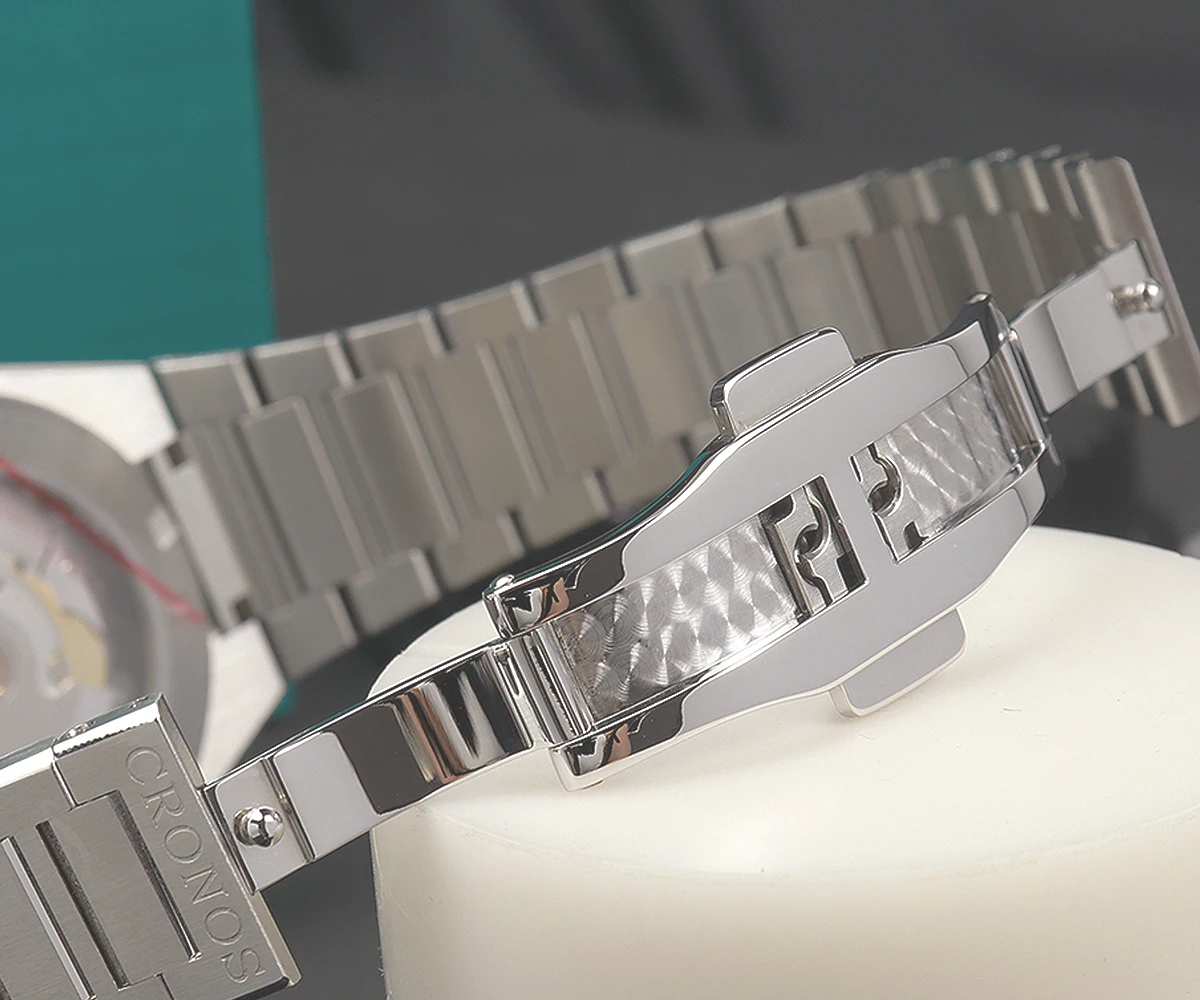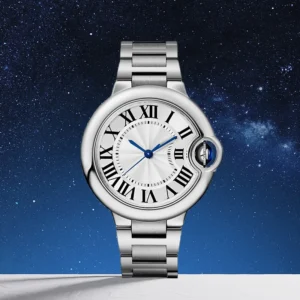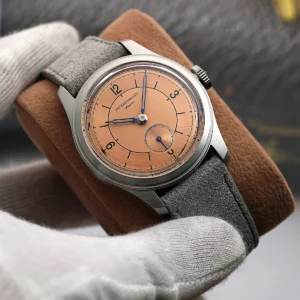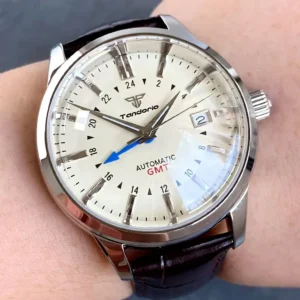Introduction to Watch Styling as a Personal Statement
In the world of personal style, watches transcend their basic timekeeping function to become powerful statements of individuality and taste. More than simple accessories, these intricate mechanisms on your wrist communicate volumes about your personality, attention to detail, and stylistic sensibilities. The choice between classic and minimalist watches represents two distinct aesthetic philosophies that can dramatically influence your overall appearance.
Classic timepieces celebrate rich traditions of watchmaking with their detailed dials, pronounced numerals, and often intricate complications. In contrast, minimalist watches embrace simplicity with clean lines and uncluttered faces that speak to contemporary design sensibilities. Understanding how to style each type properly can transform your entire look and elevate everyday outfits to extraordinary ensembles.
The art of watch styling extends beyond merely selecting an attractive timepiece—it involves thoughtful coordination with your wardrobe, consideration of occasions, and attention to proportion and balance. The classic vs minimalist dress watches debate isn’t about which style reigns supreme, but rather about which approach best complements your personal aesthetic and the message you wish to convey in any given situation.
This comprehensive guide will explore how to master watch styling for both classic and minimalist timepieces, providing you with the knowledge to make confident choices that enhance your overall appearance.
Understanding the Essential Characteristics of Classic and Minimalist Watches
Defining Classic Watch Design Elements
Classic watches embody horological tradition with distinctive design elements that have stood the test of time. These timepieces typically feature ornate details that showcase traditional craftsmanship and heritage. Understanding these elements helps you better appreciate their styling potential.
The defining characteristics of classic dress watches include:
- Roman or elegant Arabic numerals arranged in traditional patterns
- Guilloche or textured dials with detailed finishes
- Blued steel or polished metallic hands in traditional shapes (dauphine, leaf, or sword)
- Polished precious metal cases (gold, silver, stainless steel) with medium to larger diameters
- Complications such as date windows, moonphase indicators, or small seconds subdials
- Traditional leather straps in brown or black, often with alligator or crocodile patterns
- Metal bracelets with intricate link designs in matching case metals
These timepieces exude a sense of established elegance that pairs naturally with formal attire but can be styled down for versatility. The classic automatic dress watches showcase these traditional elements while incorporating modern reliability.
Defining Minimalist Watch Design Elements
Minimalist watches represent the “less is more” philosophy in horological design, focusing on essential elements while eliminating unnecessary details. These timepieces make their statement through careful restraint and thoughtful simplicity.
Key characteristics of minimalist dress watches include:
- Clean dials with minimal or no indices
- Absence of numerals or simple line markers
- Thin, straightforward hands without elaborate designs
- Slim case profiles that sit close to the wrist
- Monochromatic color schemes with subtle contrasts
- Simple or absent complications, prioritizing pure timekeeping
- Thin leather straps, Milanese mesh, or integrated designs
- Brushed or matte finishes rather than high polish
The aesthetic power of minimalist timepieces lies in their ability to communicate sophistication through simplicity. These minimalist automatic watches demonstrate how refined restraint can create a striking visual impact despite—or perhaps because of—their simplicity.
Side-by-Side Comparison: Classic vs. Minimalist
| Feature | Classic Watches | Minimalist Watches |
|---|---|---|
| Dial | Detailed with textures | Clean with minimal markings |
| Hands | Ornate (leaf, sword) | Simple, straight designs |
| Indices | Roman numerals, applied markers | Line markers or absent |
| Case | Medium to large, often polished | Slim profile, often brushed |
| Statement | Traditional sophistication | Contemporary restraint |
The classic dress watch and minimalist styles represent different approaches to elegance, with each making a distinctive impression on observers.
Universal Watch Styling Principles for Any Timepiece
Matching Watch to Occasion and Attire
Selecting the right watch for each occasion forms the foundation of proper watch styling. This decision should consider both the formality of the event and the overall outfit you’ll be wearing.
For formal black-tie events, the most elegant and understated pieces are traditionally appropriate. Business settings typically allow for more expression while maintaining professionalism. Casual environments offer the greatest freedom for personal style expression. Understanding these visual styles of mechanical watches helps you make appropriate selections for every situation.
Consider the overall formality of your attire first, then choose a watch that matches or sits just slightly below that level to maintain balance.
Achieving Perfect Proportions and Fit
The proper fit and proportion of your watch relative to your wrist size is crucial for comfortable wear and visual harmony. A watch that’s too large overwhelms smaller wrists, while a tiny timepiece might look insubstantial on larger frames.
As a general guideline:
– For smaller wrists (under 6.5 inches), consider cases between 36-40mm
– For medium wrists (6.5-7.5 inches), cases between 38-42mm often work well
– For larger wrists (over 7.5 inches), watches from 42-46mm maintain proportion
Beyond case diameter, the thickness of watch cases significantly impacts how formal or casual a watch appears and how it sits under shirt cuffs. Thinner profiles generally present more formally, while thicker cases convey a sportier aesthetic.
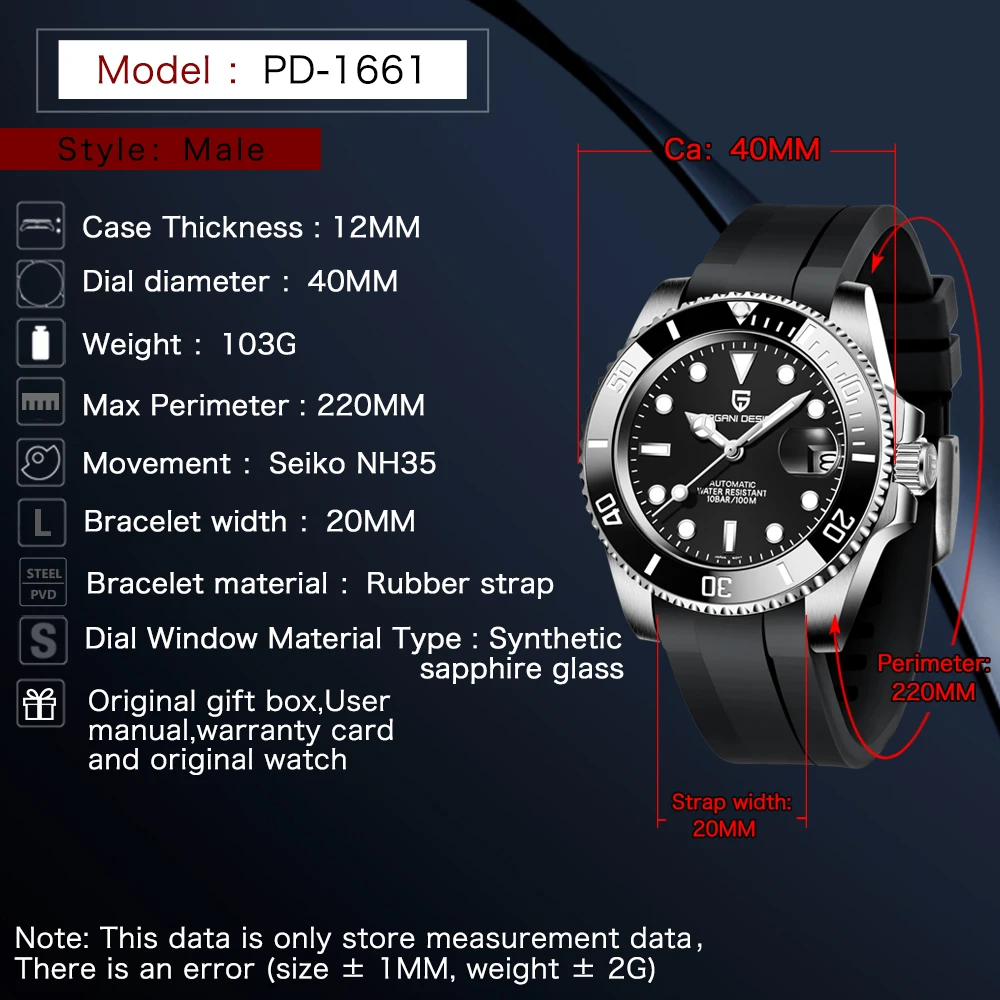
Coordinating Metals and Materials
Creating harmony between your watch and other accessories enhances your overall appearance. The traditional rule suggests matching metals across your accessories—your watch case should coordinate with belt buckles, cufflinks, and rings.
For leather straps, conventional wisdom suggests matching your watch strap with your shoes and belt, particularly in formal settings. Brown leather straps pair naturally with brown leather shoes, while black straps complement black footwear.
Titanium automatic watches offer interesting styling options with their distinctive gray tone that can serve as a neutral alternative when you don’t want the warmth of gold or the coolness of silver.
Balancing Watch with Other Accessories
When styling watches alongside other accessories, consider the principle of balance. Allow one statement piece to serve as the focal point rather than competing elements.
For instance, when wearing a detailed classic watch, consider more subdued cufflinks and minimal bracelets. Conversely, a minimalist timepiece might allow for slightly more expressive accompanying jewelry.
When stacking bracelets near your watch, maintain proportion by keeping the combined visual weight of all wrist accessories appropriate to your build and the formality of your outfit.
Styling Classic Watches for Different Occasions
Classic Watches for Formal Events
At black-tie galas and formal ceremonies, classic watches shine in their element. For these prestigious occasions, opt for thin, elegant timepieces that easily slip under shirt cuffs without disrupting the clean lines of formal attire.
The most traditional approach favors classic watches with:
– Simple white or black dials without excessive complications
– Precious metal cases (gold or silver-toned)
– Thin profiles that sit close to the wrist
– Traditional leather straps in black
– Minimal or no date windows
The proper relationship between watch and French cuffs is critical—your watch should remain mostly concealed when your arm is extended, revealing itself subtly only when your wrist bends. The design evolution of formal watch styles shows how these principles have remained consistent even as fashions change.
Classic Watches in Professional Settings
In business environments, classic watches project authority and attention to detail. These timepieces complement both traditional suits and business casual attire while maintaining professional decorum.
For office settings, consider:
– Medium-sized cases (38-42mm) that present substantial without overwhelming
– Silver, gold, or two-tone cases depending on your typical attire
– Dials with date complications (highly practical for business settings)
– Brown or black leather straps based on your typical shoe color
– Subtle complications that add functionality (date windows, small seconds)
Classic manual wind watches offer a distinctive talking point in professional settings, where the ritual of winding can demonstrate appreciation for tradition and craftsmanship.
Classic Watches for Smart Casual Occasions
Smart casual settings allow for greater creative expression while maintaining sophistication. Classic watches can be “dressed down” effectively to complement this versatile dress code.
Consider these approaches:
– Experimenting with colored leather straps beyond standard black and brown
– Opting for sportier classic models with more robust construction
– Showcasing interesting complications like moonphases or power reserves
– Choosing steel cases rather than precious metals for a more approachable look
– Exploring contrasting stitch details on leather straps for visual interest
The versatility of classic watches truly emerges in smart casual settings, where they can bridge the gap between formal elegance and casual comfort.
Classic Watches for Casual Everyday Wear
Even in casual settings, classic watches can add a touch of sophistication without feeling overdressed. The key is selecting more robust models and pairing them with appropriate straps.
For everyday casual wear:
– Consider classic watches with sportier elements and stronger water resistance
– Explore casual strap options like textured leather, NATO, or canvas straps
– Don’t fear showing some personality through dial colors beyond traditional white or black
– Look for models with luminous hands for practical functionality
– Choose stainless steel over precious metals for durability during active wear
Styling Minimalist Watches for Maximum Impact

Minimalist Watches for Formal Occasions
While classic watches have traditionally dominated formal events, contemporary minimalist timepieces offer a refreshing modern elegance that works beautifully with formal attire. These watches make their statement through perfect proportions and understated refinement.
For formal occasions, select minimalist watches with:
– Ultra-thin case profiles that disappear easily under shirt cuffs
– Clean dials without unnecessary elements
– Simple stick or baton hands without embellishment
– High-quality leather straps in traditional black
– Monochromatic color schemes that create subtle contrast
The elegance of minimalist dress watch design lies in its ability to complement rather than compete with formal attire, allowing the clean lines of a well-tailored suit to remain the focus.
Minimalist Watches in Professional Environments
Minimalist watches project modern efficiency and clean aesthetic sensibilities in workplace settings. Their understated design communicates contemporary professionalism that works well across various industries.
For business environments, consider minimalist watches with:
– Mid-sized cases with slim profiles
– Simple date functions without additional complications
– Mesh or leather straps in neutral colors
– Monochromatic dials with subtle textures
– Clean indices without numerals or minimal numerals
Thin automatic dress watches offer practical advantages in professional settings, sliding easily under shirt cuffs during presentations and meetings without catching on fabric.
Minimalist Watches for Smart Casual Settings
The minimalist aesthetic naturally complements contemporary smart casual style, where clean lines and thoughtful simplicity reign supreme. These watches enhance modern wardrobes built around essential pieces and careful coordination.
For smart casual occasions:
– Experiment with colored dials in navy, gray, or green tones
– Consider mesh bracelets or textured leather straps
– Explore minimalist watches with subtle complications like small seconds
– Look for interesting case finishes like brushed steel or PVD coatings
– Focus on quality materials and execution rather than ornamentation
Minimalist watches excel particularly in smart casual environments, where their contemporary design language harmonizes with modern interpretations of classic garments.
Minimalist Watches for Everyday Casual Wear
In casual settings, minimalist watches offer practical elegance that elevates simple attire without feeling pretentious. Their clean aesthetics complement everything from jeans and t-shirts to casual button-downs and chinos.
For casual daily wear:
– Consider minimalist watches with slightly more robust construction
– Explore casual strap options like perforated leather or canvas
– Don’t hesitate to choose colored dials that complement your typical wardrobe
– Look for designs with adequate water resistance for daily activities
– Focus on comfort for all-day wear with lightweight materials
The versatility of minimalist watches makes them excellent candidates for signature daily timepieces that can transition seamlessly between various casual contexts.
Strategic Watch Selection: When to Choose Classic vs. Minimalist
Occasion-Based Selection Guide
Selecting between classic and minimalist watches depends significantly on the specific occasion and its expected dress code. This strategic approach ensures your timepiece always enhances rather than detracts from your overall presentation.
| Occasion | Classic Watch Advantage | Minimalist Watch Advantage |
|---|---|---|
| Formal Black Tie | Traditional elegance aligns with conventional formal codes | Contemporary interpretation of formal minimalism |
| Business Formal | Projects established authority and tradition | Communicates modern efficiency and forward-thinking |
| Creative Professional | Shows appreciation for heritage and craft | Reflects design-conscious aesthetic sensibilities |
| Smart Casual | Can be dressed down through strap changes | Naturally complements modern casual attire |
| Casual Weekend | Adds touch of sophistication to simple outfits | Provides clean, unobtrusive accompaniment to casual wear |
The visual guide to dress watch styles can help you understand which aesthetic better serves specific occasions based on established conventions and contemporary interpretations.
Personal Style Compatibility
Your overall personal style should significantly influence your choice between classic and minimalist timepieces. The most successful watch styling occurs when your timepiece authentically reflects your broader aesthetic sensibilities.
Classic watches tend to complement individuals who:
– Appreciate traditional tailoring and heritage brands
– Favor rich textures and detailed accessories
– Incorporate vintage elements into their wardrobe
– Value established style codes and conventions
– Prefer timeless pieces over trendy items
Minimalist watches often resonate with those who:
– Embrace modern, streamlined silhouettes
– Follow contemporary design aesthetics
– Prefer subtle, understated accessories
– Value functional simplicity in their possessions
– Curate their wardrobe around essential pieces
Understanding which watch style better aligns with your personal fashion philosophy enhances the authenticity of your overall presentation. The debate between minimalist vs classic dress watches ultimately comes down to personal preference and which style better reflects your individual aesthetic.
Wardrobe Harmony Considerations
Evaluating your existing wardrobe helps determine which watch style will integrate most seamlessly with your clothing collection. This practical assessment ensures your timepiece investment will complement rather than conflict with your typical attire.
Consider classic watches if your wardrobe features:
– Traditional suits and formal business attire
– Heritage-inspired casual wear
– Rich patterns and textures
– Variety of formal occasions requiring traditional dress codes
– Earth tones and traditional color palettes
Lean toward minimalist watches if your closet contains:
– Contemporary suit silhouettes with cleaner lines
– Modern casual basics with minimal branding or detailing
– Monochromatic color schemes
– Technical fabrics and innovative materials
– Simplified, essential wardrobe pieces
For versatile wardrobes containing elements of both traditional and contemporary styles, consider building a collection featuring both watch types. The diverse automatic dress watches available today allow for creating a complementary collection that spans both aesthetic approaches.
Advanced Watch Styling Techniques and Considerations
The Art of Watch Layering
Watch layering—the practice of pairing your timepiece with complementary bracelets—offers creative styling possibilities when done thoughtfully. This technique works differently depending on whether you’re styling classic or minimalist watches.
For classic watches:
– Choose simple, elegant bracelets that don’t compete with the watch’s detailing
– Maintain metal consistency between watch case and bracelet materials
– Consider thin precious metal chains or simple leather bands
– Limit additional pieces to 1-2 items to prevent overwhelming the wrist
For minimalist watches:
– Experiment with geometric or architectural bracelet designs
– Consider creating deliberate material contrast between watch and bracelets
– Try contemporary materials like woven textiles or matte metals
– Layer with intention rather than accumulation, maintaining clean aesthetic
Regardless of watch style, ensure sufficient space between pieces to prevent scratching and maintain distinct visual separation between elements.
Strategic Use of Watch Dial Colors
Dial color significantly impacts a watch’s versatility and styling potential across different outfits and occasions. Strategic selection enhances your watch’s integration with your wardrobe.
Traditional white, cream, or black dials offer maximum versatility across formal and business settings. Blue dials bridge formal and casual contexts beautifully, complementing navy suits and denim equally well. Gray dials provide subtle contemporary flair while maintaining neutrality with most clothing colors.
For seasonal considerations:
– Lighter dials (white, silver, cream) appear more spring/summer appropriate
– Darker dials (black, navy, green) present well during fall/winter
– Sunburst or textured dials catch light differently depending on environment
Classic Automatic Dress Watches, Day Date Automatic Watches, Perpetual Calendar Automatic Watches
Price range: $540.60 through $574.60 Select options This product has multiple variants. The options may be chosen on the product pageClassic Automatic Dress Watches, GMT Automatic Watches, GMT Pilot Watches
Price range: $1,240.86 through $1,463.33 Select options This product has multiple variants. The options may be chosen on the product pageClassic Automatic Dress Watches, Thin Automatic Dress Watches
$437.64 Select options This product has multiple variants. The options may be chosen on the product pageProfessional Spec Dive Watches, Titanium Automatic Watches
$574.74 Select options This product has multiple variants. The options may be chosen on the product pageClassic Manual Wind Watches, Manual Wind Dress Watches
Price range: $425.50 through $462.50 Select options This product has multiple variants. The options may be chosen on the product pageClassic Automatic Dress Watches, GMT Automatic Watches, GMT Dive Watches
Price range: $468.93 through $552.94 Select options This product has multiple variants. The options may be chosen on the product page
Strap Changing: The Ultimate Versatility Tool
Perhaps the most powerful technique for expanding your watch’s styling potential is strategic strap changing. This approach allows a single timepiece to serve multiple style needs across various contexts.
Building a thoughtful strap collection might include:
– Formal black leather for traditional business and formal events
– Brown leather in various shades for versatile business casual pairings
– Textured or colored leather for creative professional settings
– Canvas or NATO straps for casual weekend wear
– Mesh or Milanese bracelets for contemporary professional environments
Consider both color and texture when selecting straps. Smooth leathers present more formally than textured or perforated options. Contrast stitching creates a more casual appearance than tone-on-tone stitching. Strap width should appropriately match your watch’s lug width for proper proportion.
Complementary Watch Style Pairings with Specific Outfits
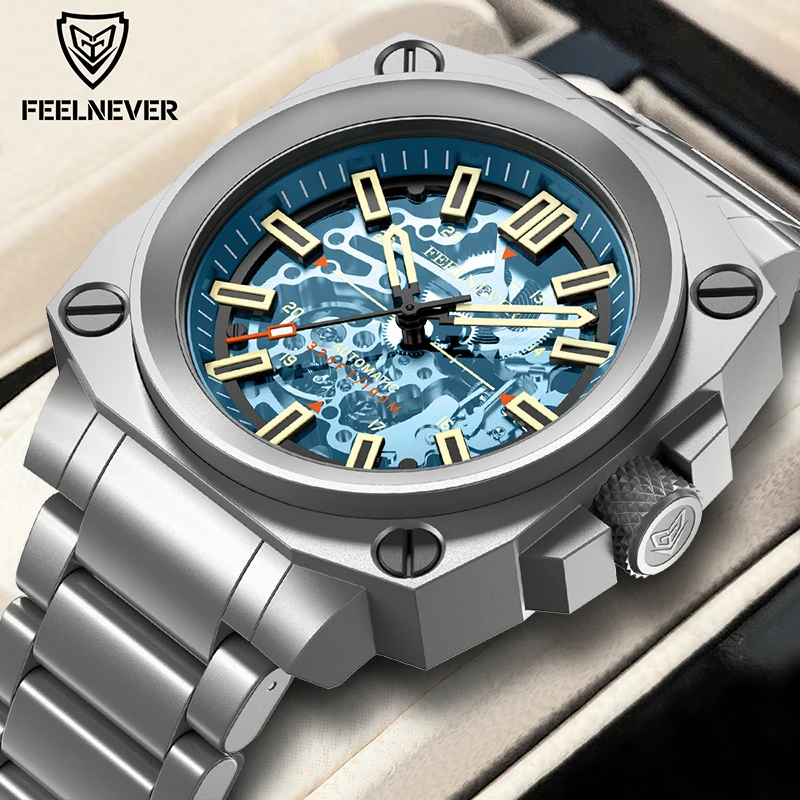
Creating harmonious pairings between watches and specific outfits enhances your overall presentation. These specific combinations demonstrate how to leverage both classic and minimalist watches across different contexts:
Business Formal:
– Classic approach: Gold or silver case watch with black leather strap, white dial, and minimal complications paired with a navy or charcoal suit, white shirt, and coordinating tie
– Minimalist approach: Slim stainless steel watch with black leather strap, monochromatic dial, and simple hands worn with a modern-cut gray suit, crisp white shirt, and solid tie
Business Casual:
– Classic approach: Steel case watch with brown leather strap, cream dial, and date function styled with navy trousers, light blue button-down, and brown loafers
– Minimalist approach: Gray dial watch with mesh bracelet paired with charcoal chinos, white Oxford shirt, and minimal leather sneakers
Smart Casual:
– Classic approach: Two-tone watch with textured dial on brown leather strap complementing dark jeans, unstructured sport coat, and button-down shirt
– Minimalist approach: Brushed case minimalist watch with navy dial on tan leather strap paired with khaki chinos, white tee, and navy bomber jacket
Weekend Casual:
– Classic approach: Steel sports watch with complications on a NATO strap styled with quality denim, casual button-down, and leather sneakers
– Minimalist approach: Clean dial watch on canvas strap worn with chinos, plain t-shirt, and minimal sneakers
Understanding which watch style better enhances specific outfit combinations helps you make the right selection for any scenario. The classic modern dress watch debate ultimately comes down to which style better complements your specific outfit for any given occasion.
Common Watch Styling Mistakes to Avoid
Even with quality timepieces, certain styling errors can diminish your overall presentation. Avoiding these common pitfalls ensures your watch enhances rather than detracts from your appearance:
Improper Size Proportion: Wearing watches that are dramatically too large or too small for your wrist creates visual imbalance. Select case sizes appropriate to your wrist dimensions for optimal presentation.
Mismatching Formality Levels: Pairing highly formal watches with casual attire or sporty watches with formal wear creates discord. Align your watch’s formality level with your outfit’s formality.
Competing Accessories: Overwhelming your presentation with multiple statement pieces creates visual confusion. Let your watch be the focal point or choose a more subtle timepiece if other accessories take center stage.
Neglecting Strap Coordination: Failing to consider how your watch strap interacts with other leather accessories can create disjointed looks. Maintain reasonable coordination between leathers for cohesive styling.
Inappropriate Complications: Featuring watches with highly technical or sporty complications at formal events can appear incongruous. Choose complications appropriate to the setting.
Overlooking Cultural Context: Different environments have different expectations for appropriate timepieces. Understanding the watch features that are considered appropriate in various cultural and professional contexts prevents unintentional faux pas.
Building a Versatile Watch Collection: The Case for Both Styles
Rather than viewing classic and minimalist watches as competitors, consider how they can complement each other within a thoughtfully curated collection. Each style serves distinct purposes and occasions, making a compelling case for owning both.
A foundational two-watch collection might include:
– A classic dress watch with traditional styling for formal occasions, important business meetings, and situations where conventional elegance is appropriate
– A minimalist everyday watch for casual settings, creative environments, and contemporary styling needs
This minimal approach provides maximum versatility while ensuring you’re appropriately accessorized across most common scenarios. As your collection grows, you might add specialized pieces for specific activities or occasions, but these two cornerstone styles form an excellent foundation.
The investment in quality timepieces from both schools of design provides long-term versatility that transcends seasonal trends.
Personalizing Watch Styling Beyond Convention

While understanding traditional rules provides a solid foundation, developing a signature watch styling approach that reflects your personality creates truly memorable impressions. The most compelling personal styles often thoughtfully bend conventional guidelines rather than breaking them entirely.
Consider these approaches to personalized watch styling:
Signature Strap Choices: Develop a reputation for interesting strap selections that maintain appropriateness while showcasing personality, such as subtly textured leathers or unexpected colors that still coordinate with outfits.
Context-Appropriate Statement Pieces: Reserve bolder watches for environments where personal expression is valued, such as creative industries or social events, while maintaining more traditional choices for conventional business settings.
Personal Pairing Rituals: Create your own consistent approaches to pairing watches with outfits based on personal preferences rather than strict rules, such as always matching your watch to subtle accent colors in your outfit.
For those seeking distinctive expressions of personal style, exploring unique automatic watches can provide opportunities for individuality while maintaining the quality and craftsmanship of fine timepieces.
The most sophisticated approach to watch styling ultimately combines understanding of traditional principles with confident personal interpretation, creating looks that feel both appropriate and authentically individual.

